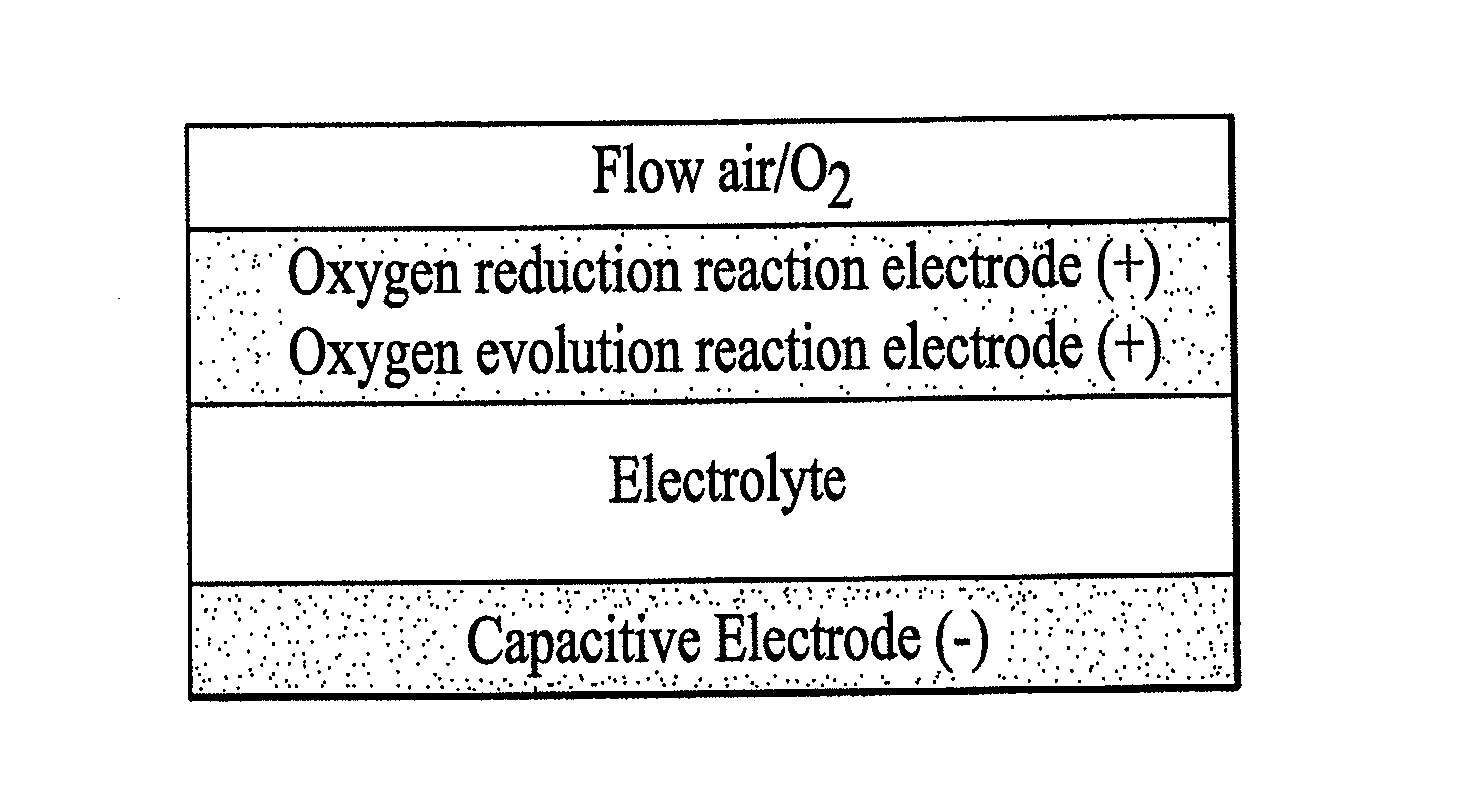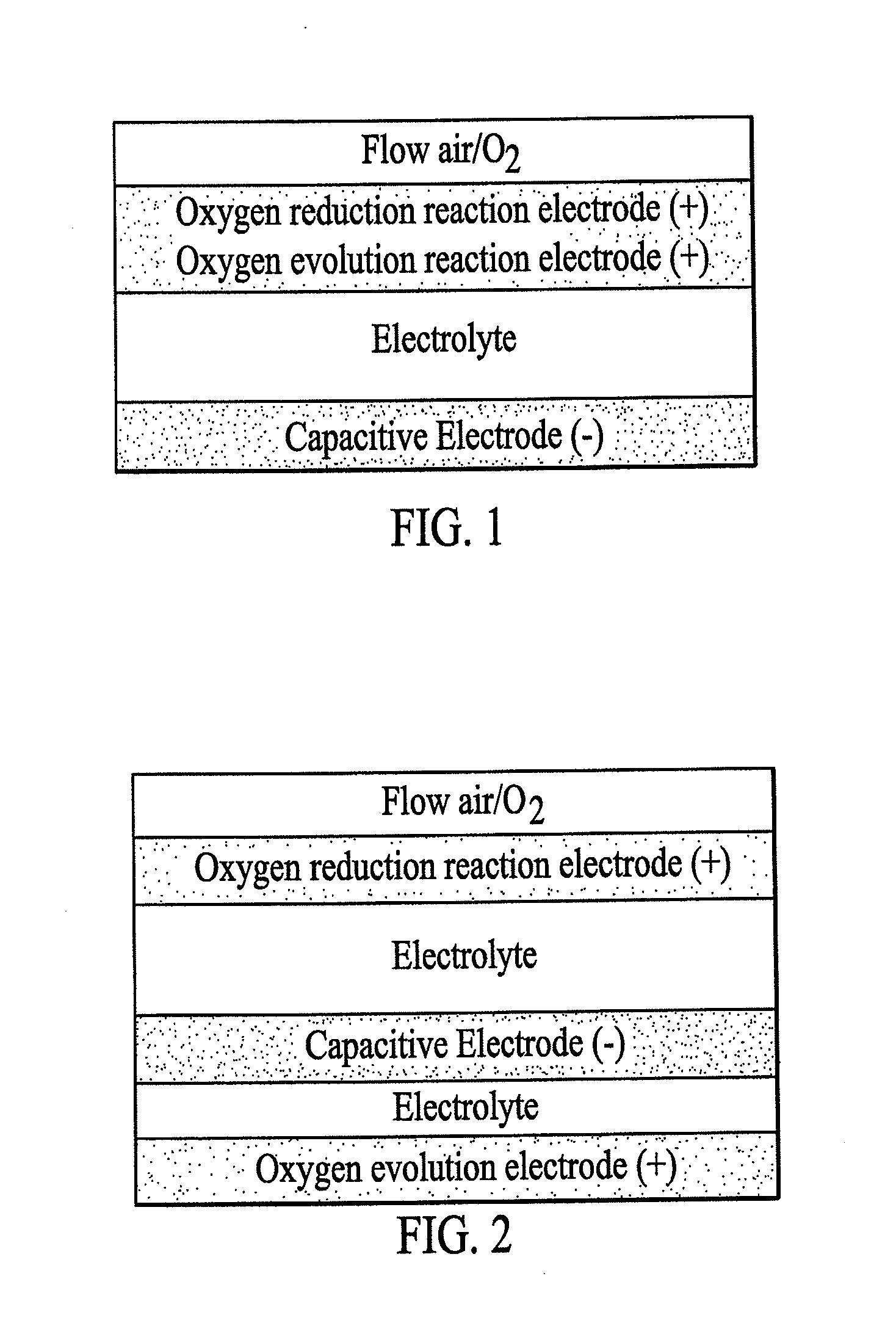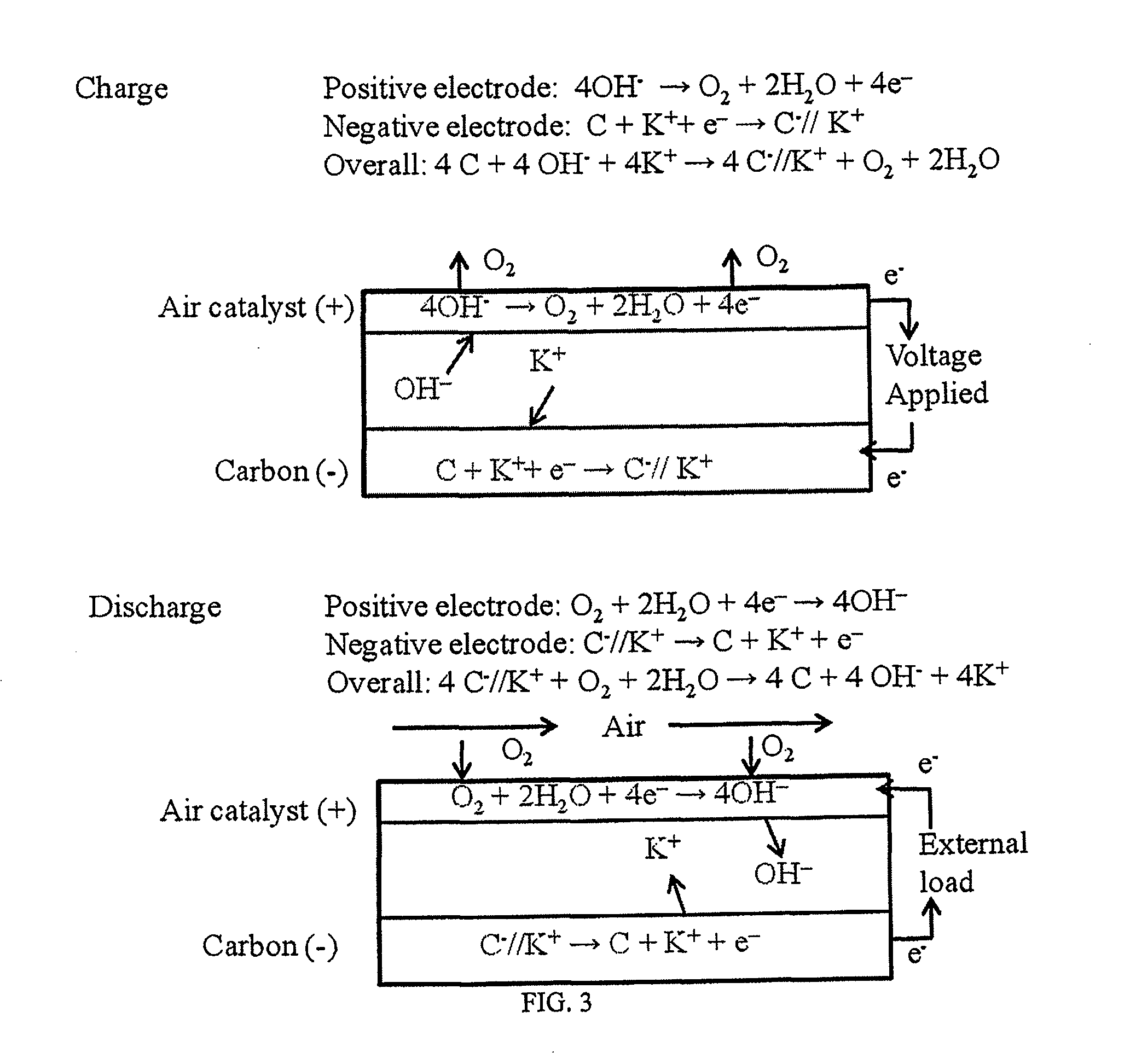Rechargeable electrochemical energy storage device
a rechargeable, energy storage technology, applied in the direction of non-aqueous electrolyte cells, cell components, batteries, etc., can solve the problems of poor cycling stability of metal batteries, limited charge/discharge cycling stability of non-dissolving electro-active materials, etc., to achieve the effect of reducing or nearly eliminating the weight of air electrodes, improving energy density, and large theoretical capacitance of air electrodes
- Summary
- Abstract
- Description
- Claims
- Application Information
AI Technical Summary
Benefits of technology
Problems solved by technology
Method used
Image
Examples
examples
[0050]A two-electrode test cell of the asymmetric energy storage device was fabricated by using an air electrode from a commercial zinc-air battery as the positive electrode and an activated carbon capacitive electrode as the negative electrode. A mercury-mercuric oxide (Hg / HgO) reference electrode was added into the cell to monitor the potential evolution of the air electrode during charge and discharge cycles. The air electrode was obtained by dissembling a commercial zinc-air button cell and then rinsing the electrode with de-ionized water. 1 M KOH was used as the electrolyte for the test cell. Electrochemical testing was carried out in a battery testing instrument (ARBIN). A graph of constant current charge / discharge curves is shown in FIG. 8. The charge / discharge curves are almost linear, which is typical for double-layer capacitance (non-faradic reactions). The cell is stable for the tested cycles. No visually observable decrease in charging / discharge time is observed. The air...
PUM
| Property | Measurement | Unit |
|---|---|---|
| mass ratio | aaaaa | aaaaa |
| charge capacities | aaaaa | aaaaa |
| voltage potentials | aaaaa | aaaaa |
Abstract
Description
Claims
Application Information
 Login to View More
Login to View More - R&D
- Intellectual Property
- Life Sciences
- Materials
- Tech Scout
- Unparalleled Data Quality
- Higher Quality Content
- 60% Fewer Hallucinations
Browse by: Latest US Patents, China's latest patents, Technical Efficacy Thesaurus, Application Domain, Technology Topic, Popular Technical Reports.
© 2025 PatSnap. All rights reserved.Legal|Privacy policy|Modern Slavery Act Transparency Statement|Sitemap|About US| Contact US: help@patsnap.com



